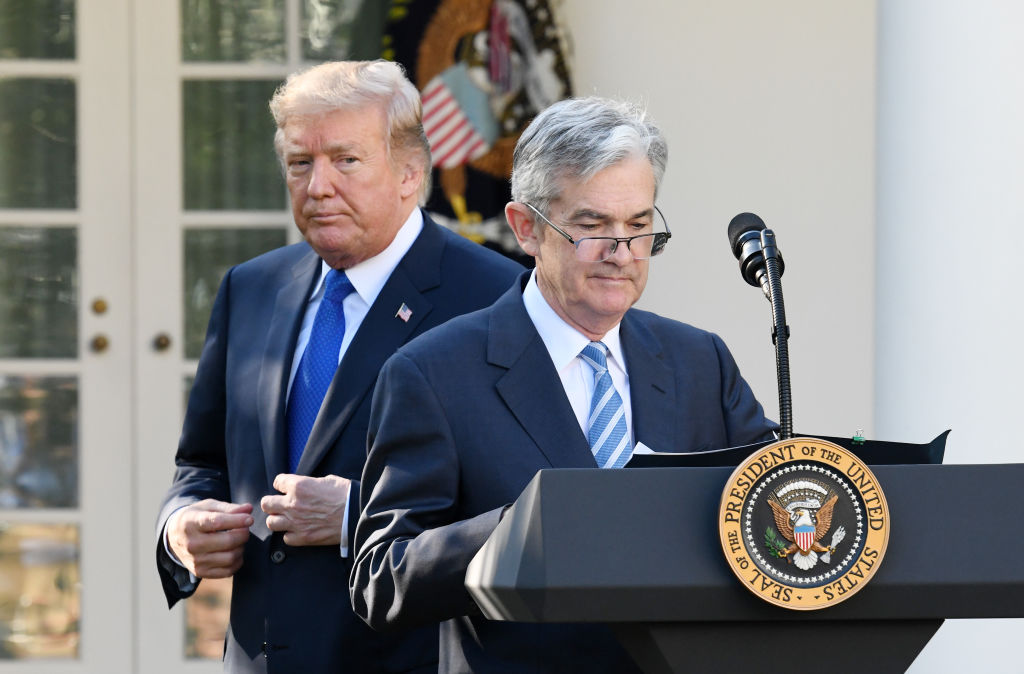Investing Moves to Make at the Start of the Year
After another big year for stocks in 2024, investors may want to diversify in 2025. Here are five portfolio moves to make at the start of the year.


Large U.S. stocks are incredibly popular these days – and for good reason. The S&P 500 added 25% in 2024 after generating a total return of 26% in 2023. The index hasn't posted consecutive years of 20%-plus gains since 1997 and 1998.
But it’s important to remember we live in a great big world of investing options, and "plain vanilla" index funds tied to prominent megacorporations like the Magnificent 7 stocks represent only one flavor.
It’s also worth noting the decided difference in performance in 2024 based on specific stocks and their sectors.

Sign up for Kiplinger’s Free E-Newsletters
Profit and prosper with the best of expert advice on investing, taxes, retirement, personal finance and more - straight to your e-mail.
Profit and prosper with the best of expert advice - straight to your e-mail.
Consider that only one raw materials stock in the S&P 500 – specialty chemicals company Ecolab (ECL) – has been able to match the performance of the broader index, and every other raw materials stock has underperformed.
On the other hand, among about 70 financial stocks, approximately 50 recorded returns of 20% or better for the year – with a dozen firms outperforming the S&P 500 by more than two times.
It can be simple and cost-effective to take what the market gives you in a broad-based index fund.
But this approach includes the real risk that as you spread your money across the good names you're also buying the bad.
If you’re thinking about a more tactical approach in 2025, here are five investing moves to make at the start of the year.
Stop overlooking digital assets
With bitcoin up 120% in 2024 and a crypto-friendly Trump administration in Washington, it's a big mistake for any investor to dismiss digital assets as a fad or a scam.
Many mainstream brokers and traditional investment firms now offer direct access to cryptocurrencies like bitcoin and ethereum. Aside from the short-term profit opportunities, crypto is being treated more seriously as an asset class like cash, bonds, and gold when it comes to conversations about the importance of diversification beyond stocks
President-elect Donald Trump, in addition to sponsoring his own crypto project, is taking guidance from crypto-friendly personalities like Elon Musk and plans to nominate crypto advocate Paul Atkins to chair the Securities and Exchange Commission.
This combination makes for a favorable environment for digital assets into 2025 and beyond.
Buying bitcoin and other digital assets directly has never been easier, but increasingly popular vehicles such as the iShares Bitcoin Trust ETF (IBIT) and the Grayscale Bitcoin Trust ETF (GBTC) make it so you never have to open a digital wallet.
Rethink the energy sector
First things first: With 2024 going down as the hottest year on record and scientists warning the world has crossed the critical benchmark of a 1.5 degrees Celsius temperature change vs pre-industrial levels, we are in significant trouble when it comes to the long-term implications of climate change.
That said, there is likely a short-term opportunity in fossil fuels thanks to a changing of the guard in Washington and a focus on prices today instead of environmental impact tomorrow.
Consider President-elect Trump's proposed nomination of oil and gas executive and fracking advocate Chris Wright to be his energy secretary the clearest proof.
But not all traditional energy stocks will see favorable results. It’s all about reserves and the global economics of energy.
As a result, the tailwind may be best experienced by service stocks that can help other energy firms ramp up quickly – with giants such as Baker Hughes (BKR) and Schlumberger (SLB) at the front of the queue.
Pare back on big tech
As it is with his disruption of energy sector policy, President-elect Trump has made no secret of his dislike of technology behemoths such as Google parent Alphabet (GOOGL) and Facebook parent Meta Platforms (META).
In fact, the Project 2025 blueprint specifically calls for "reining in Big Tech."
It has been an undeniably good investment to hold trillion-dollar technology companies in your portfolio over the last few years, as these firms have consistently outperformed. But the environment may be changing – and thus your allocations may have to as well.
This is not to say tech stocks should get dumped from any portfolio. As the largest sector in the S&P 500, it’s simply not practical for any investor to cut out these stocks altogether.
That said, a more balanced approach may be worthy of consideration, with the goal of keeping a foothold in tech but avoiding the overreliance on these leaders characteristic of many portfolios in recent years.
Think locally, not globally
In years past, geographic diversification was considered a wise move to protect investors from the unique economic challenges faced here at home.
Nowadays, with increasingly insular policies around the globe that hint of trade wars and even literal armed conflict, it may not be in your best interest to allocate too much toward multinational businesses.
Retail stocks including Dick’s Sporting Goods (DKS) and baby clothes icon Carters (CRI) rely heavily on overseas relationships to stock on their shelves. And tech firms like Nvidia (NVDA) and Apple (AAPL) depend on Asian manufacturers as well as overseas customers to drive their respective bottom lines.
Many economists have warned that Trump’s saber-rattling on tariffs and trade could have serious negative consequences, and there’s hope that pro-business sentiment will win the day.
But it’s worth considering a move away from connected multinational companies just in case trade war escalation does happen and disrupts the bull market.
Consider hard assets
There's been a lot of talk about fighting inflation, but it remains unclear just how much can be done about soaring home and food prices in the U.S.
The alternative to hand-wringing over high prices may be to position yourself to profit from these trends: Investors can buy precious metals like gold and silver and industrial metals like copper as well as energy inputs such as crude oil and natural gas to establish portfolio positions in raw materials.
You don’t have to be a futures trader, either, with ETFs like the SPDR Gold Shares (GLD) linked to gold bullion and the the Invesco Optimum Yield Diversified Commodity Strategy No K-1 ETF (PDBC) that holds a bit of everything in the commodities space.
Similarly, real estate stocks or ETFs like the Vanguard Real Estate ETF (VNQ) provide exposure to property prices in a much more accessible way than buying a second home to rent out on your own.
If you fear rising prices, consider hard assets as both a hedge against inflation and a way to profit from the march higher in 2025.
Related content
Get Kiplinger Today newsletter — free
Profit and prosper with the best of Kiplinger's advice on investing, taxes, retirement, personal finance and much more. Delivered daily. Enter your email in the box and click Sign Me Up.

Jeff Reeves writes about equity markets and exchange-traded funds for Kiplinger. A veteran journalist with extensive capital markets experience, Jeff has written about Wall Street and investing since 2008. His work has appeared in numerous respected finance outlets, including CNBC, the Fox Business Network, the Wall Street Journal digital network, USA Today and CNN Money.
-
 2026 Disney Dining Plan Returns: Free Dining for Kids & Resort Benefits
2026 Disney Dining Plan Returns: Free Dining for Kids & Resort BenefitsPlan your 2026 Walt Disney World vacation now. Learn about the returning Disney Dining Plan, how kids aged three to nine eat free, and the exclusive benefits of staying at a Disney Resort hotel.
By Carla Ayers
-
 How Can Investors Profit From AI's Energy Use?
How Can Investors Profit From AI's Energy Use?Global energy demand is expected to grow by leaps and bounds over the next several years as AI usage accelerates. Here's how to get a piece of the pie.
By Jacob Schroeder
-
 How Can Investors Profit From AI's Energy Use?
How Can Investors Profit From AI's Energy Use?Global energy demand is expected to grow by leaps and bounds over the next several years as AI usage accelerates. Here's how to get a piece of the pie.
By Jacob Schroeder
-
 Can Trump Fire Powell? A Supreme Court Case Could Decide
Can Trump Fire Powell? A Supreme Court Case Could DecidePresidential posts threaten to overwhelm decades of precedent and tradition, whatever the nine justices decide.
By David Dittman
-
 What Are AI Agents and What Can They Do for You?
What Are AI Agents and What Can They Do for You?AI agents promise to be the next big thing in artificial intelligence, but what exactly do they do?
By Tom Taulli
-
 Should You Buy an iPhone Now Before Tariffs Hit?
Should You Buy an iPhone Now Before Tariffs Hit?Looming tariffs can make an iPhone purchase seem urgent. Here's what to do if you need another phone but want to save money.
By Laura Gariepy
-
 SRI Redefined: Going Beyond Socially Responsible Investing
SRI Redefined: Going Beyond Socially Responsible InvestingNow that climate change has progressed to a changed climate, sustainable investing needs to evolve to address new demands of resilience and innovation.
By Peter Krull, CSRIC®
-
 Here's When a Lack of Credit Card Debt Can Cause You Problems
Here's When a Lack of Credit Card Debt Can Cause You ProblemsUsually, getting a new credit card can be difficult if you have too much card debt, but this bank customer ran into an issue because he had no debt at all.
By H. Dennis Beaver, Esq.
-
 33 Stocks That Could Rally 50% or More This Year
33 Stocks That Could Rally 50% or More This YearAnalysts say these S&P 500 stocks have at least 50% price upside over the next year or so.
By Dan Burrows
-
 Stock Market Today: Dow Drops 971 Points as Powell Pressure Ramps Up
Stock Market Today: Dow Drops 971 Points as Powell Pressure Ramps UpPresident Trump is increasing his attacks against Jerome Powell, insisting the Fed chair cut interest rates.
By Karee Venema